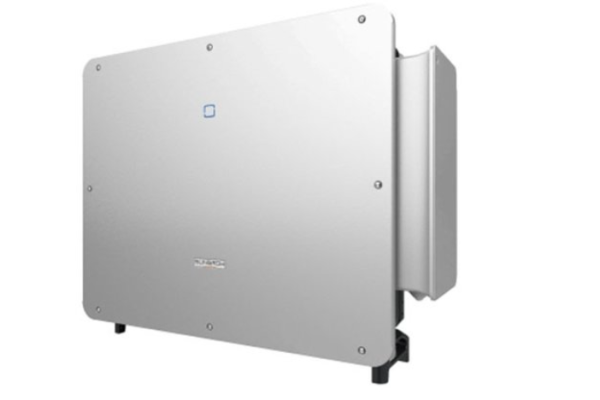From Factory Test to Port Delivery — A Practical Guide for Buyers
For distributors, EPCs, and system integrators sourcing energy storage systems (ESS) from China, ensuring that every shipment leaves the factory in perfect condition is critical.
A well-prepared pre-shipment checklist prevents costly delays, hidden defects, or rework during installation.
This guide outlines the essential quality control (QC), documentation, and logistics checks every buyer should complete before their ESS is shipped — whether it’s a single hybrid inverter or a full containerized battery system.
1. Why Pre-Shipment QC Matters
Energy storage systems combine electrical, mechanical, and software components.
Even minor defects — like loose connectors or mismatched firmware — can cause system malfunction.
Typical risks of skipping QC include:
- BMS not communicating with inverter
- Wrong voltage configuration (110V vs. 230V)
- Damaged connectors during transport
- Missing certifications for customs clearance
⚠️ Fixing such issues onsite can cost 10–20× more than prevention at factory level.
2. Step 1: Verify Technical Specifications
Before testing begins, double-check that all parameters match your Purchase Order (PO) and Proforma Invoice (PI).
Key items to confirm:
- System voltage and capacity (e.g., 512V 100 kWh LFP)
- Inverter model and firmware version
- BMS communication protocol (CAN/RS485/Modbus)
- PV and grid voltage ranges
- Communication accessories (Wi-Fi/Ethernet/4G dongles)
🧩 Tip: Ask your supplier to provide a “Configuration Sheet” listing exact part numbers and firmware versions for your records.
3. Step 2: Factory Acceptance Test (FAT)
A Factory Acceptance Test is the buyer’s main safeguard before shipment. It verifies both hardware and software readiness.
Recommended FAT Checklist:
| Test Type | Purpose | Verification Method |
|---|---|---|
| Visual Inspection | Detect mechanical damage | Check enclosure, labeling, connectors |
| Function Test | Confirm inverter + BMS operation | Power up and simulate grid loss |
| Communication | Ensure data exchange | Test CAN/RS485 link with battery |
| Efficiency | Measure conversion losses | Record inverter efficiency ≥ 90% |
| Safety | Verify protection | Test short-circuit, over-temp cut-off |
| Aging Test | Stability under load | Run 2–4h at 70–80% rated load |
| Data Recording | Ensure traceability | Log serial numbers, firmware versions |
💡 Professional suppliers should send FAT videos or live test sessions for overseas clients.
4. Step 3: Review Test Reports and Certificates
Always request copies of:
- Test reports (efficiency, safety, communication)
- Certificate copies (CE, UL, IEC, UN38.3, MSDS)
- Calibration records (testing instruments)
- QC checklist signed by factory engineer
For containerized ESS systems, ask for additional:
- Thermal management test report
- Insulation resistance test
- System-level safety compliance (IEC 62619 / UL9540)
📎 Keep all test reports digitally — they’re often required for customs or project handover.
5. Step 4: Confirm Visual and Mechanical Details
Inspect all visible components before packaging:
- Cabinet/enclosure paint finish and IP rating label
- Cable terminations and labeling
- BMS and inverter ports properly fixed
- Ventilation and fans clean and unobstructed
- No rust, oil, or dust residue inside cabinet
🔧 Use the “Four-Corner Rule”: inspect top, bottom, front, and rear of every unit before it’s sealed.
6. Step 5: Verify Packing List and Accessories
Missing accessories cause major installation delays.
Cross-check your packing list against the actual shipment.
Checklist:
☑ Mounting brackets and screws
☑ DC/AC cables and lugs
☑ Monitoring modules (Wi-Fi/LAN/4G)
☑ User manuals and quick-start guides
☑ Labels or serial number tags
☑ Safety warning stickers
📦 For container systems, confirm internal layout drawing matches actual placement — especially breaker positions and access doors.
7. Step 6: Packaging and Protection
Proper packaging ensures the system arrives intact after long-distance shipping.
Standard Requirements:
- Foam or wooden frame around inverter/battery
- Shockproof corners + strapping
- Desiccant packs and humidity indicators for batteries
- IP-rated plastic wrap for outdoor products
- “Do Not Stack / Fragile / Lithium Battery” warning labels
🚢 Always request photos of packed pallets and container loading to verify labeling and handling.
8. Step 7: Documentation for Shipping and Customs
Incomplete paperwork can delay customs clearance or insurance claims.
Prepare the following documents with your supplier:
| Document | Purpose | Who Provides |
|---|---|---|
| Commercial Invoice | Customs declaration | Supplier |
| Packing List | Shipment details | Supplier |
| Bill of Lading / AWB | Transport record | Forwarder |
| Certificate of Origin | Import tariff benefits | Supplier |
| Test Reports / CE / UL | Safety compliance | Supplier |
| UN38.3 + MSDS | Lithium battery transport | Supplier |
| Insurance Certificate | Damage protection | Buyer or Forwarder |
✈️ For air shipment, UN38.3 certification is mandatory for all lithium batteries.
9. Step 8: Labeling and Serial Number Traceability
Each inverter and battery module should have:
- Product model
- Serial number (SN)
- Rated voltage/current
- Manufacturing date
- QR code for traceability
Ask the supplier to provide a SN list in Excel, linking each unit to its FAT test report.
📊 This simplifies after-sales service and warranty claims later.
10. Step 9: Confirm Shipping Method and Handling Requirements
For Sea Freight:
- Use moisture-proof pallets and container liners
- Avoid stacking heavy batteries on inverters
- Add shock sensors if possible
For Air Freight:
- Comply with IATA DGR lithium battery packaging (PI965/PI966)
- Use UN-approved packaging boxes
For Truck Delivery (Domestic China):
- Use covered transport to avoid rain and dust
- Apply vibration protection and fixed straps
⚠️ If the shipment includes both inverters and batteries, pack them separately to prevent short circuits or condensation damage.
11. Step 10: Arrange Third-Party Inspection (Optional but Recommended)
Independent inspection agencies (e.g. SGS, TÜV, Intertek, or AsiaInspection) can perform:
- Visual checks
- Power-on testing
- Random sampling
- Report with photo evidence
💬 For large projects, a third-party FAT report provides objective assurance and builds client confidence.
12. Step 11: Insurance and Delivery Terms
Confirm Incoterms (FOB, CIF, DDP, etc.) and insurance coverage.
Ensure the insurance includes:
- Fire and water damage
- Transport vibration or drop damage
- Theft during transit
💰 CIF terms usually include basic marine insurance, but not always full coverage — clarify before payment.
13. Step 12: Communication and Handover
Before shipment, confirm the following with your supplier:
✅ Shipping date and ETD
✅ Container number or tracking info
✅ System photos before sealing
✅ FAT and packaging video links
✅ Spare parts and tools list
🧠 Having all documents organized before the ship departs saves time during customs clearance and installation.
Shipping an energy storage system isn’t just about logistics — it’s the final step in ensuring quality, safety, and customer trust.
A structured pre-shipment checklist minimizes risk by verifying every stage:
- Technical specs ✅
- Testing and certification ✅
- Packaging and documentation ✅
- Traceability and insurance ✅
⚡ Remember: catching one small issue at the factory can prevent a large problem at the project site.
By collaborating closely with reliable suppliers, buyers can ensure their systems arrive on time, fully functional, and ready for seamless installation.









